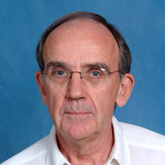Dr. Richard Wolfenden, Alumni Distinguished Professor of Biochemistry & Biophysics, and member of the National Academy of Sciences, and co-author Charles Lewis, PhD publish a report in the November issue of the Proceedings of the National Academy of Sciences showing that without enzymes speeding the process, it would take 2.3 bilion years to complete vital biological transformation.

All biological reactions within human cells depend on enzymes. Their power as catalysts enables biological reactions to occur usually in milliseconds. But how slowly would these reactions proceed spontaneously, in the absence of enzymes – minutes, hours, days? And why even pose the question?
One scientist who studies these issues is Richard Wolfenden, Ph.D., Alumni Distinguished Professor Biochemistry and Biophysics and Chemistry at the University of North Carolina at Chapel Hill. Wolfenden holds posts in both the School of Medicine and in the College of Arts and Sciences and is a member of the National Academy of Sciences.
In 1995, Wolfenden reported that without a particular enzyme, a biological transformation he deemed “absolutely essential” in creating the building blocks of DNA and RNA would take 78 million years.
“Now we’ve found a reaction that – again, in the absence of an enzyme – is almost 30 times slower than that,” Wolfenden said. “Its half-life – the time it takes for half the substance to be consumed – is 2.3 billion years, about half the age of the Earth. Enzymes can make that reaction happen in milliseconds.”
With co-author Charles A. Lewis, Ph.D., a postdoctoral scientist in his lab, Wolfenden published a report of their new findings recently in the online early edition of the Proceedings of the National Academy of Sciences. The study is also due to appear in the Nov. 11 print edition.
The reaction in question is essential for the biosynthesis of hemoglobin and chlorophyll, Wolfenden noted. But when catalyzed by the enzyme uroporphyrinogen decarboxylase, the rate of chlorophyll and hemoglobin production in cells “is increased by a staggering factor, one that’s equivalent to the difference between the diameter of a bacterial cell and the distance from the Earth to the sun.”
“This enzyme is essential for both plant and animal life on the planet,” Wolfenden said. “What we’re defining here is what evolution had to overcome, that the enzyme is surmounting a tremendous obstacle, a reaction half-life of 2.3 billion years.”
Knowing how long reactions would take without enzymes allows biologists to appreciate their evolution as prolific catalysts, Wolfenden said. It also enables scientists to compare enzymes with artificial catalysts produced in the laboratory.
“Without catalysts, there would be no life at all, from microbes to humans,” he said. “It makes you wonder how natural selection operated in such a way as to produce a protein that got off the ground as a primitive catalyst for such an extraordinarily slow reaction.”
Experimental methods for observing very slow reactions can also generate important information for rational drug design based on cellular molecular studies.
“Enzymes that do a prodigious job of catalysis are, hands-down, the most sensitive targets for drug development,” Wolfenden said. “The enzymes we study are fascinating because they exceed all other known enzymes in their power as catalysts.”
Wolfenden has carried out extensive research on enzyme mechanisms and water affinities of biological compound. His work has also influenced rational drug design, and findings from his laboratory helped spur development of ACE inhibitor drugs, now widely used to treat hypertension and stroke. Research on enzymes as proficient catalysts also led to the design of protease inhibitors that are used to treat HIV infection.
“We’ve only begun to understand how to speed up reactions with chemical catalysts, and no one has even come within shouting distance of producing, or predicting the magnitude of, their catalytic power,” Wolfenden said.
Support for this research came from the National Institute of General Medicine, a component of the National Institutes of Health.
Note: Wolfenden can be reached at (919) 966-1203 or water@med.unc.edu. Lewis can be contacted at (919) 966-7409 or clewisjr@med.unc.edu.
School of Medicine contact: Les Lang (919) 966-9366, llang@med.unc.edu
News Services contact: Patric Lane (919) 962-8596, patric_lane@unc.edu
